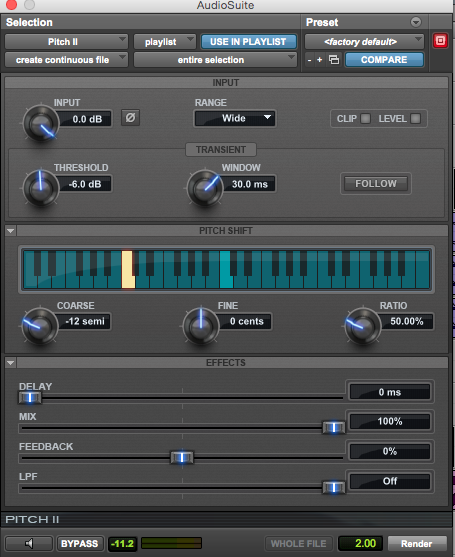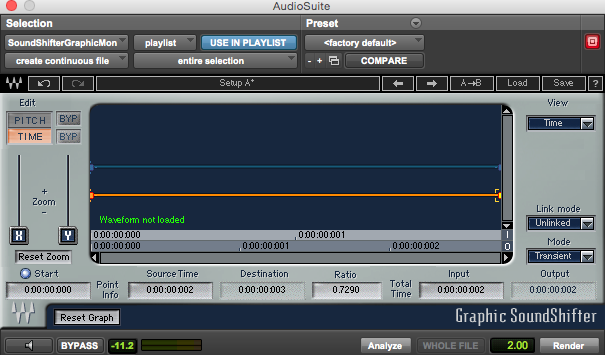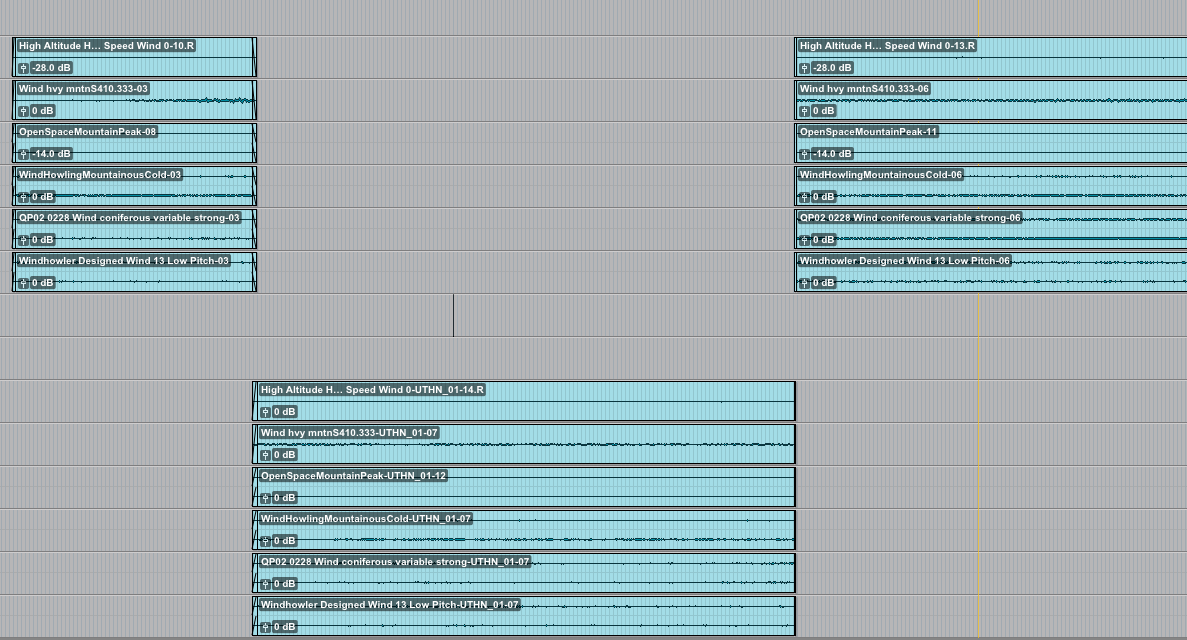WRITTEN BY Brad Meyer
SOUND EFFECTS EDITOR, BOOM BOX POST
Here at Boom Box Post we have an extensive intern curriculum where our interns have to complete several different projects as part of their program. The projects include everything from sound editing basics, to pre-dubbing and from-scratch design work. In the project I teach, we come across many real-world sound editing scenarios, including a small clip in slow motion. Slo-Mo is a storytelling tool that sound editors come across quite often, and it is where I get the most questions regarding, “How do I cut this?”
Because slow motion is more conceptual than it is technical, there is no right way to approach it. However, there are some basics that you are going to want to cover, and I thought this would be a great opportunity to illustrate various sound concepts while editing scenes in slow motion. Every scene and scenario has it’s own set of challenges, but these tips are a great place to start.
Pitching Down and Slowing Down
Since slow motion is normally a slowed-down version of reality, utilizing pitch shift and time shift are essential to creating a believable Slo-Mo scene. When pitching, I like to use either Protools’ built-in Audiosuite Pitch Shift, or the Waves Sound Shifter. When time shifting, I go for either Protools’ built-in Audiosuite Time Shift or Waves’ Time Shift component of their Sound Shifter Plugin
When pitching down an effect or a group of effects in Slo-Mo, I normally pitch at least one whole octave down. (12 half-steps). An octave is usually about as far as you can go without causing sever audio artifacts, so that is a good ballpark to shoot for. If you can manage to go lower, go for it! If you can’t pitch down as low as an octave without whatever you’re pitching sounding like garbage, you may need to design something completely new…but we’ll get into that a bit later. In addition to pitching something lower, you are going to want to slow it down as well with a time shift. This is because even when a sound is playing at a lower pitch than it normally would, you won’t achieve a true slow feel until it’s actually slowed down. I slow down by at least 30%, but feel free to go for more if you can get away with it.
Backgrounds and Ambiences
On top of slowing and pitching down your sound effects and hard effects, it’s important that backgrounds and ambiences don’t go unnoticed. There are often background elements that will poke through your mix if not treated the same way as your hard effects, such as birds, insects, and traffic. These all must be slowed down and pitched down as well to create an overall slowed-down environment. These should be treated as a new background/ambience so the realistic and Slo-Mo backgrounds/ambiences can be mixed separately from each other.
Low End and LFE
Because of sound design precedent in the past, and because Slo-Mo scenes are almost always very stylized, it has become an expectation from audiences that slow motion sound design include low end elements. Low end is the foundation for any ultra-cool Slo-Mo scene and it helps contribute to the notion that reality has in fact slowed. If editing/mixing in 5.1 or a higher mix format, LFE and low sounding effects are going to be your best friend. Everything from bass drops and drones, to low whooshes and stingers are fair game.
Transitioning In and Out of Slo-Mo
A lot of times a scene will cut very hard into Slo-Mo, sometimes with a transition period of one frame or less. This can lead to getting in and out of a Slo-Mo scene very jarring. Although this is not always the case, it is smart to incorporate some type of transition element while coming in and out of your Slo-Mo scene. I usually choose some type of low-end whoosh or bass flutter, but whatever helps smooth the gap between reality and Slo-Mo is fair game.
Designing New Elements for a Slo-Mo Environment
While many effects and builds will pitch down and slow down just fine, there are many things that don’t pitch or time shift very well. In this case, you may want to pick different effects or totally redesign a particular moment. Take for example a rushing river. Water doesn’t pitch down very well and can leave the sound of your river sounding more like an accident than a conscious sound choice. In a Slo-Mo scene, you might want to go with some bubbling lava or thick, goopy mud rather than water. Creatively, what could pass as water in Slo-Mo? What will convince the audience that they are truly experiencing a moment that has been slowed down?
Below, you can hear a rendered down Slo-Mo fight scene that I cut a while back. In the audio clip, you can hear that it begins with a real-time soundtrack that transitions into and subsequently out of Slo-Mo. This clip includes all of the elements mentioned above: pitching down and slowing down, treating backgrounds and ambiences, use of LFE and low-end elements, transitioning in and out of the Slo-Mo scene, and a redesign of some weapons because they did not slow down well at all.
Don’t be afraid to pick sounds might not seem like they could pass as a slowed down version of something else. Don’t be afraid to play around and try something new. A lot of rules are already being broken when Slo-Mo is in play, so get creative with it!





